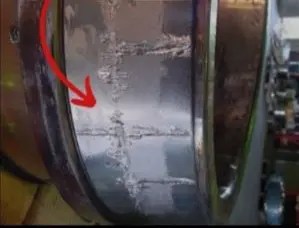Wind Turbine Bearing Problems
Bearings are parts that support and guide rotating or oscillating elements, such as
axles or wheels, and transfer loads between machine components.
They offer reduced friction and therefore allow high rotational speeds while reducing noise,
heat, energy consumption, and wear.

No matter the model of wind turbine, bearings are often a problem in all of them.

The ISO 15243 standard is used to classify bearing damage into 6 categories:
- Fatigue
- wear
- Corrosion
- electric pitting
- plastic deformation
- Fractures and fissures
Pitting can be visible to the naked eye, but it starts microscopically, so its investigation is important.

Possible causes of pitting:
- Periods of heavy and dynamic) loads, leading to vibrations and sudden load variations.
- Fast acceleration and deceleration changes.
- Lack of lubricant.
- Structural deformations.
- Weather conditions (rapid temperature changes, salt water, wind, dust, etc).
- Slow march.
Lubricant contamination can also lead to bearing pitting problems. Micro pitting is observed by the gray spots caused by the microscopic presence of cracks. The bearing surface weakens resulting in a loss of precision.
Contaminants are typically sand, rust, and component chips. Unfortunately, most of these particles cannot be filtered.

Juliana Lucena, Dr. in Energy (UFPE), Production Engineer (USP), Professor at the Federal Network
